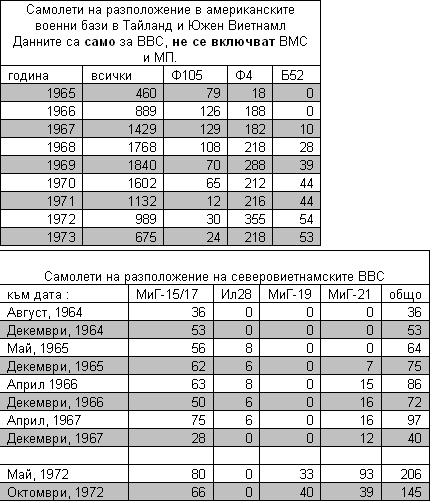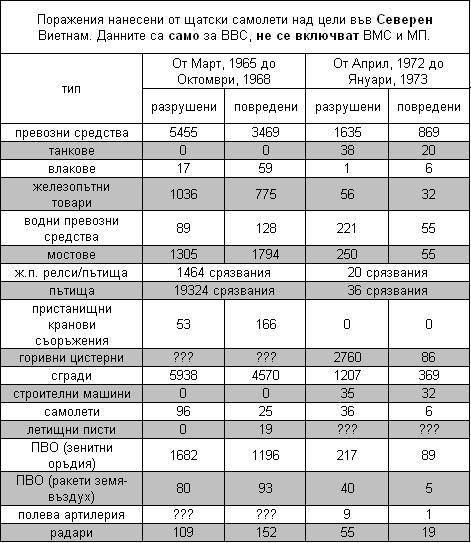Как се бута самолет
Сигурно някои го знаят, но все пак


It was March 10, 1967, in enemy skies over Hanoi. The last of 44 F-4 aircraft were just coming off a bombing raid into North Vietnam when Capt. Bob Pardo and his wingman Capt. Earl Aman were both hit by enemy fire. Aman's aircraft was the worse off. Hit by two damaging blows to the fuel tank, he suddenly was down to 2,000 pounds of fuel instead of the 7,000 pounds he needed to safely return to the refueling tanker.
Pardo knew he had to do something quickly if Aman was going to make it out. First, he tried to use Aman's drag chute to help the wounded Phantom. With the drag chute extended, Pardo tried to maneuver behind Aman's aircraft so he could use the drag chute compartment to push the aircraft toward the tanker. No good. Turbulence was too great.
Pardo decided to try to use the tailhook on Aman's aircraft. He moved in under Aman's aircraft and got the tailhook against the windscreen of his F-4 Phantom. Success. By this time, Aman's aircraft was so low on fuel that Pardo told him to shut down the engines. Pardo's push was working, but the two aircraft had to stay directly in line with one another. Pardo would push for 15 to 20 seconds, lose the necessary balance and slide off to the side. Then he'd have to reposition and push again. By now the pressure of Aman's F-4 aircraft was cracking the windscreen of Pardo's fighter. As the spider web of cracks grew, Pardo became increasingly concerned. He moved the hook down the windscreen into a small metal area below. The hook stayed put, and the push continued. To keep his own damaged Phantom flying, Pardo shut down one engine for the last 10 minutes of the flight.
After pushing Aman's aircraft almost 88 miles, the two damaged Phantoms reached friendly air space. At 6,000 feet, with practically no fuel left, the two pilots and their weapons systems officers parachuted to safety.
"That was one hell of an airplane," retired U.S. Air Force Lt. Col. Bob Pardo recalled later. "For one aircraft to get two airplanes that far out of Vietnam speaks very well of the people who put it together."
Сигурно някои го знаят, но все пак


It was March 10, 1967, in enemy skies over Hanoi. The last of 44 F-4 aircraft were just coming off a bombing raid into North Vietnam when Capt. Bob Pardo and his wingman Capt. Earl Aman were both hit by enemy fire. Aman's aircraft was the worse off. Hit by two damaging blows to the fuel tank, he suddenly was down to 2,000 pounds of fuel instead of the 7,000 pounds he needed to safely return to the refueling tanker.
Pardo knew he had to do something quickly if Aman was going to make it out. First, he tried to use Aman's drag chute to help the wounded Phantom. With the drag chute extended, Pardo tried to maneuver behind Aman's aircraft so he could use the drag chute compartment to push the aircraft toward the tanker. No good. Turbulence was too great.
Pardo decided to try to use the tailhook on Aman's aircraft. He moved in under Aman's aircraft and got the tailhook against the windscreen of his F-4 Phantom. Success. By this time, Aman's aircraft was so low on fuel that Pardo told him to shut down the engines. Pardo's push was working, but the two aircraft had to stay directly in line with one another. Pardo would push for 15 to 20 seconds, lose the necessary balance and slide off to the side. Then he'd have to reposition and push again. By now the pressure of Aman's F-4 aircraft was cracking the windscreen of Pardo's fighter. As the spider web of cracks grew, Pardo became increasingly concerned. He moved the hook down the windscreen into a small metal area below. The hook stayed put, and the push continued. To keep his own damaged Phantom flying, Pardo shut down one engine for the last 10 minutes of the flight.
After pushing Aman's aircraft almost 88 miles, the two damaged Phantoms reached friendly air space. At 6,000 feet, with practically no fuel left, the two pilots and their weapons systems officers parachuted to safety.
"That was one hell of an airplane," retired U.S. Air Force Lt. Col. Bob Pardo recalled later. "For one aircraft to get two airplanes that far out of Vietnam speaks very well of the people who put it together."






 От флотата във въздушен бой свалят 41 МиГ-17 и 17 МиГ-21 - ясно е кой е по-добрия съперник. От Ф-104 пък само (и само от ВВС) свалят 27 МиГ-17 и нито един МиГ-21. Баш пилци.
От флотата във въздушен бой свалят 41 МиГ-17 и 17 МиГ-21 - ясно е кой е по-добрия съперник. От Ф-104 пък само (и само от ВВС) свалят 27 МиГ-17 и нито един МиГ-21. Баш пилци.  .
. 
 въпроси.
въпроси.
Comment